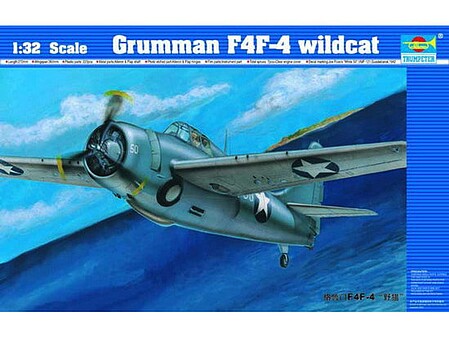F4F4 Wildcat Fighter Aircraft
This is a 1/32 scale F4F4 Wildcat plastic model airplane.
| Retail $51.95 SAVE 21% ! | |
IN STOCK 1,177 Rewards Points USA Ground Shipping Only Not eligible for Free-Shipping |
You Might Also Like
Specs
- Trumpeter Product Number: 2223
- Length: 272 mm
- Wingspan: 360 mm
Includes
- 223 pcs
- 7 sprues
- Metal aileron & flap shaft
- Photo etched aileron & flap hinges
- Clear engine cover
Requirements & Suggestions
- Assembly
- Plastic cement (TES3501) (PLS00002) (TAM87012) or glue (HLC107)
- CA Glue (HLC107) (HLC106) (PAAPT02) (HLC121)
- Sprue Cutter (XUR410A) (EXL55594)
- Long nose pliers
- Modeling Knife (EXL16001) (XACX3627) (EXL16018)
- Small files
- Tweezers (TAM74003) (EXL30416)
- Pin Vise (TAM74050) (ZON37-145) (SQU10801)
- Soft cloth
- Paint
Product Rank
Reviews |
Information
At the onset of the Pacific War in December 1941, the Japanese Navy A6M Zero fighter was the dominant aircraft successful against the allied air forces. The Zero's attempt at total superiority was thwarted by numerous F4F Wildcat fighters flown from U.S. aircraft carriers. Introduced in 1942, during the critical stages of the Pacific War, the F4F-4 was an improved version of Grumman's Wildcat carrier based fighter. This new version, with folding wings and six wing mounted .50 caliber machine guns, plus a more powerful 1,200HP Pratt & Whitney R-1830-36 Twin Wasp engine broke the dominance of the Japanese Zero. Grumman became known as the "Ironworks" due to its strongly designed airplanes which could absorb tremendous punishment and still fly home. Although the Wildcat was inferior to the Zero in many respects, a superb kill ratio was attained by Wildcat pilots by using its strong points against the Zero's weak points of fragility and unseasoned pilots.
Markings
- Joe Foss's White 50, VMF-121,Guadalcanal, 1942
